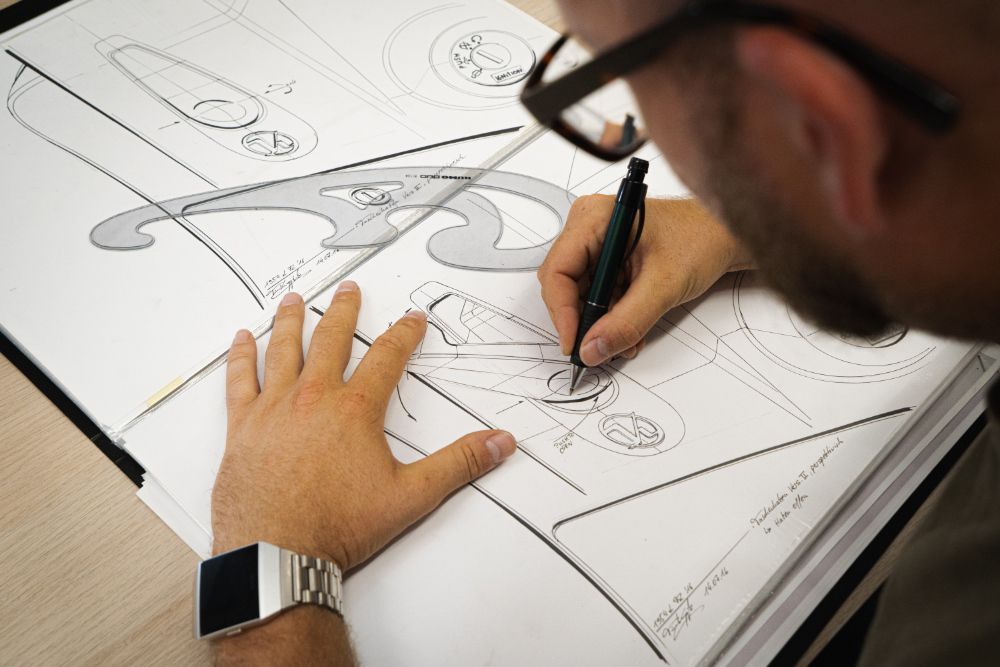Why Product Repair is so Important
(And How We Can Make It Easier)
(And How We Can Make It Easier)
Product Repair is Planet Repair
Every time a new product is made it has an impact.
Products don’t just appear out of thin air. (How cool would it be if they did!?)
Unfortunately, every time a new product is made, resources get used up. Energy, land, raw materials, all that good stuff. Emissions get emitted, and usually, there are other environmental consequences involved too.

Almost always, when a product is produced, there are negative environmental consequences involved. So product repair is essential to ensure that every product we do produce, lasts as long as possible.
Every time a new product is made it has an impact. So doesn’t it make sense to ensure every single product we produce lasts as long as possible? So we can maximise the value we get from all those resources we used to make the product?
Well of course it does! And one of the best ways we can do that is through product repair.
If we can focus on making products that are easy to repair, we can bring them back to life when they stop working. This is probably the best way to eradicate what we’ve started calling ‘single-life products’ for good. We are positive the planet would agree that this is a very good idea!
But unfortunately, a whole lot of products have been getting more and more difficult to repair in recent years. So what are we going to do about it? At Circular&Co., we tackle this issue by offering a spare parts to keep your product in circulation.
For anything that can’t be repaired, we introduced our Takeback scheme, giving our customers an incentive to return their product to us at the end of its life to ensure it is fully recycled.
The Issue: Product Repair Becoming Impractical
Particularly when it comes to modern electronics, products are not as easy to repair as they used to be.
Naturally, as technology has progressed, products have become more advanced. But the way manufacturers are choosing to design many of these products is not helping!
By doing things like glueing and soldering components together, using non-standard screws, and limiting access to spare parts, many brands are making products unnecessarily difficult and expensive to repair.

With components often glued and soldered together, repairing many modern devices has become unnecessarily difficult and expensive. Photo by PR MEDIA on Unsplash.
And as these devices become more and more integral in our everyday lives, it’s no surprise that we’re producing more electronic waste globally than ever before.
If we want to start reducing this waste — while still using all our lovely devices of course — then product repair is a big deal. And we mean practical, affordable, easily accessible product repair.
There are plenty of ways we can make this happen.
Solutions: How We Can Make Product Repair Easier
It’s encouraging to know that steps are already being taken around the world to boost product repair. But more still needs to be done!
So where are we right now, and what still needs to happen?
What’s Already Happening?
As you might expect, the steadily decreasing repairability of modern-day products has not gone unnoticed. So thankfully, some action is already being taken to make product repair more accessible.
Right to Repair
Last year, what are known as ‘right to repair’ regulations were introduced in the UK and the EU.
These regulations are basically designed to force manufacturers to make their products easier to repair. Currently, anyone making TVs, electronic displays, lighting, fridges, dishwashers, or washing machines and wash-dryers in the UK and the EU is affected by these new rules.
And under these new rules:
- Manufacturers of these products will be legally obligated to make spare parts available to professional repairers and/or end-users. The parts must remain available for at least 7-10 years after a product has been discontinued.
- Manufacturers must provide repair parts and manuals to professional repairers within 15 days of request.
- Repairs must be possible using commonly available tools.

Just last year, right to repair laws were introduced in the UK and the EU. These laws are aimed at making certain products easier to repair.
Now we would say these new rules are absolutely a welcome move in the right direction. But you might have noticed that they don’t include anything about smartphones, tablets, or laptops. Or cookers or hobs or tumble dryers or microwaves or coffee machines or kettles or a whole load of other commonly used items!
There’s also no guarantee that replacement parts will be affordable, and many of the parts will only be made available to professional repairers.
So of course we welcome these new laws with open, grateful, repairable, circular arms. But more still needs to be done.
Repairability Index
Speaking of more being done, France has already taken an extra repair-friendly step.
Since the start of last year, they’ve been requiring anyone who manufactures smartphones, laptops, TVs, washing machines, and electric lawnmowers to give these products a repairability score.
According to this ‘repairability index’, each product must be rated on a scale of 1 to 10, with 10 being the easiest to repair. Each manufacturer must score their products based on availability of technical documents to aid in repair, ease of disassembly, availability of spare parts, and a sub-criteria specific to the product category concerned.
This score — and all the information that went into calculating it — must be made available to consumers when they purchase any of these products.
The idea is that by forcing manufacturers to explicitly tell consumers how repairable their products are, they’ll be much more likely to actually make repairing them easier.
Everyone does love getting high scores on stuff right?
But how can we all start getting even higher scores when it comes to product repair?
What Still Needs to Happen to Make Product Repair Easier?
Progress is being made in the fight to make product repair more accessible, and it really is great to see. But we’re not quite there yet!
Here’s a few things we reckon would help us get over the line.
Expand Right to Repair
If we really want to make a difference, we need to implement strict right to repair laws for as many product categories as possible. In as many countries around the world as possible.
As we mentioned above, the right to repair laws introduced in the UK and the EU last year currently don’t apply to a whole bunch of widely used products. And they’re not super strict when it comes to making spare parts affordable, and easily available for everyone.
We’re sure this will happen soon enough, but if we really want to make a difference, we need to implement strict right to repair laws for as many product categories as possible. In as many countries around the world as possible.
We need laws that ensure spare parts are available to everyone, at an affordable price. And it should become standard for all products to come with clear and comprehensive instructions for repair.
If we can get to that stage, we’ll really be getting somewhere!
Repairability Scores Everywhere We Go!
One way to help us get to that stage is to take France’s repairability index and implement it far and wide. (Geographically and product-categorically) (That is a word we swear!)
If manufacturers everywhere are forced to tell us how repairable their products are, it surely won’t be long before they get their act together. (Repair their act even??)
Make Circular Design a Priority
And the best way any manufacturer can do that, is to embrace circular design.
Designing for circularity means carefully designing products with end-of-life management as the most important feature.
Circular products are designed from the very beginning to last as long as possible. Durability, repairability, upgradability, recyclability; these are all absolutely key features of any product designed using circular design principles.

If a product is designed using circular design principles, you can be sure it’ll be easily repairable!
Basically, circular design is used to create products that remain valuable even after they’ve served their initial purpose. And this most definitely involves doing things like:
- Simplifying products as much as possible.
- Using as many standard components as possible.
- Choosing modular designs when applicable.
- Making products easy to disassemble.
- Using recycle-friendly materials.
- Making spare parts readily available.
If all manufacturers start doing this, product repair will never be an issue again. And we can wave goodbye to single-life products for good!
But until that happens, there’s still plenty we can do at home to make our products more repairable.
What Can You Do Now?
Repair needs to become the first thing we think about when a product stops working. We need to get excited about repair!
As things like right to repair, repairability scores, and circular design hopefully become more commonplace, products should gradually become easier to repair.
And as that happens, it’s also important that we as consumers embrace this change. Repair needs to become the first thing we think about when a product stops working. We need to get excited about repair! As excited as we get when we think about buying a new product! And as well as getting professionals to do the repairing, we need to welcome the challenge of repairing things ourselves.
We live in the age of the internet people! There are so many resources out there that can help us learn how to repair things ourselves! (Obviously the products need to be designed for repair in the first place, but as we’ve seen that is slowly happening).
Here’s a great list of info and resources that’ll help you get repairing in no time. One of the best ones is iFixit, which offers spare parts, tools, diagnostics, product repairability reviews, and even a Youtube channel with guides on how to repair all sorts of products.
At Circular&Co., we are always looking at how we can educate and implement circular design throughout our lives. From our Coffee Cups to our Takeback scheme, we are always striving to push Circular living to the forefront, in line with our Circular Mission.
If you would like to learn more about this movement, take a look at our Circular Knowledge Hub.
With resources like these, and products that are actually designed for repair, we can all come together to make the products we use and love last.
No doubt, our planet will thank us.
This article was created by Adam Millett of Word Chameleon, in collaboration with Circular&Co.